Zinnia is a low, bushy annual with oval dark green leaves, and red, yellow, purple, pink, and sometimes green daisy-like flowers from summer to early fall. Zinnias offer masses of color in beds and borders and can be grown in small groups in containers and pots.
Zinnias are hot-weather plants. They do best after the weather warms in late spring or early summer. When autumn comes, zinnias can suffer from powdery mildew as nights grow longer and dew sits on plants longer.
Most garden zinnia belongs to the species Zinnia elegant.
Flower Garden Success Products at Amazon:
- Wildflower Seed Mix Attracts Hummingbirds and Butterflies
- Eden Brothers All Perennial Seed Mix
- 10 pcs Stainless Steel Garden Hand Tool Set
- Gorilla Cart 4 Cu. Ft, 300-pound Capacity
- Neem Bliss 100-% Cold Pressed Neem Oil
- Safer Brand Insect Killing Soap
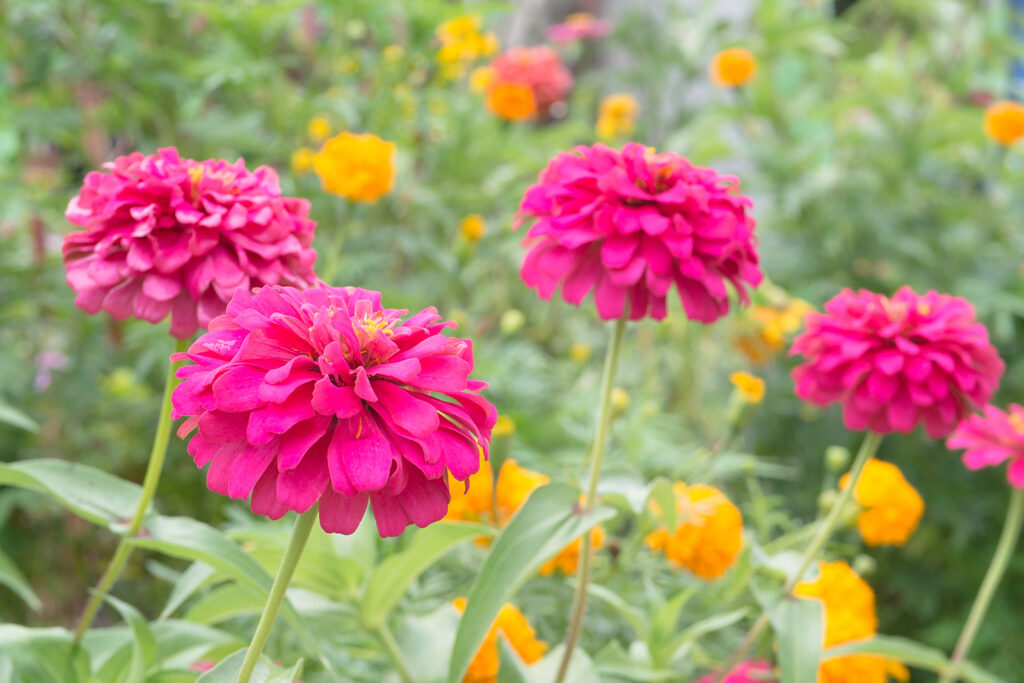
Get to know Zinnia
- Plant type: Annual
- Growing Zones and range: Annual in all zones
- Hardiness: Tender
- Height and width: 12 to 24 inches (30-61cm) tall; 6 to 15 inches (15-38cm) wide
- Foliage: Leaves range from linear to ovate or rounded
- Flowers: Showy daisylike flowers can be single or double; the flowerheads of some resemble formal decorative dahlias (referred to as “dahlia-flowered”), others resemble cactus-flowered dahlias (referred to as “cactus-flowered”)
- Flower colors: Shades of orange, red, bronze, hot pink, orange-red, and yellow-orange as well as white, pale pink, cream, and green
- Bloom time: Summer to frost
- Uses: Cut flowers, beds, borders; compact hybrids; taller varieties for cutting; containers; zinnias attract hummingbirds and butterflies
- Common name: Zinnia
- Botanical name: Zinnia spp.
- Family: Asteraceae
- Origin: Primarily Mexico, also southwestern North America, and parts of Central and South America
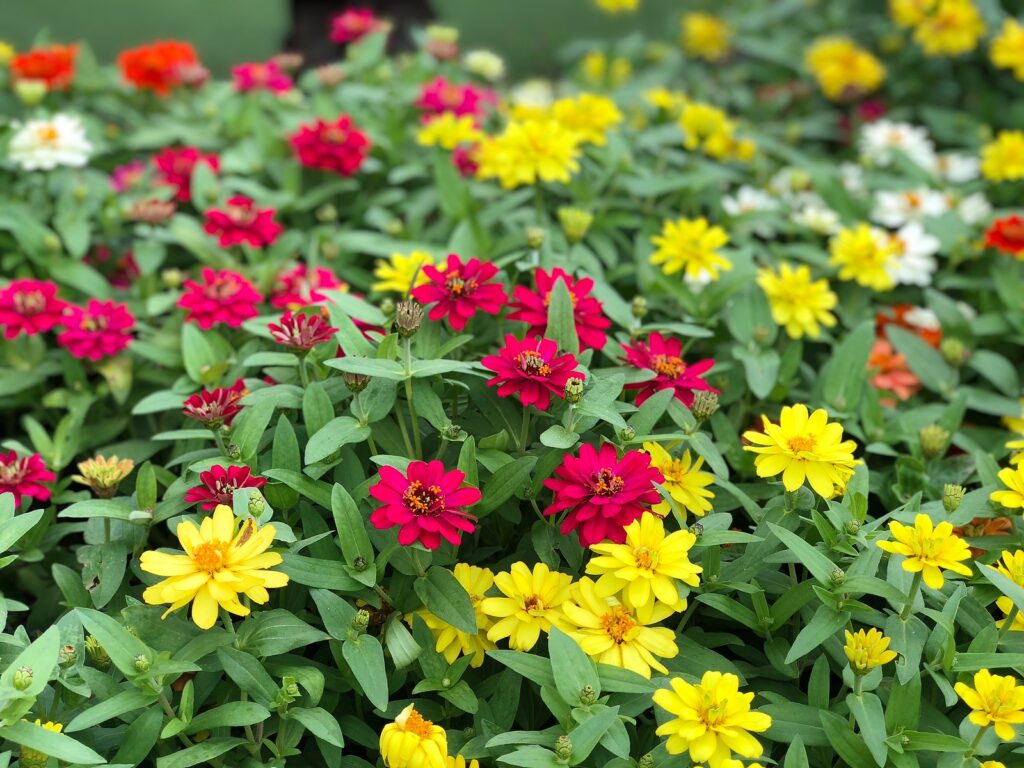
Where to plant Zinnia
- Plant zinnias in full sun in Zones 2-8. Plant zinnias in light shade in hot-summer regions in Zones 9-11.
- Grow zinnias in humus-rich, well-drained, neutral to acidic soil.
- Planting zinnias where there is good air circulation will stem attacks by pests and diseases.
Zinnia uses
- Use Zinnias in annual or mixed borders and for cutting.
- Use Zinnias to edge beds and borders and along walkways.
- Some cultivars are suitable for window boxes or other containers.
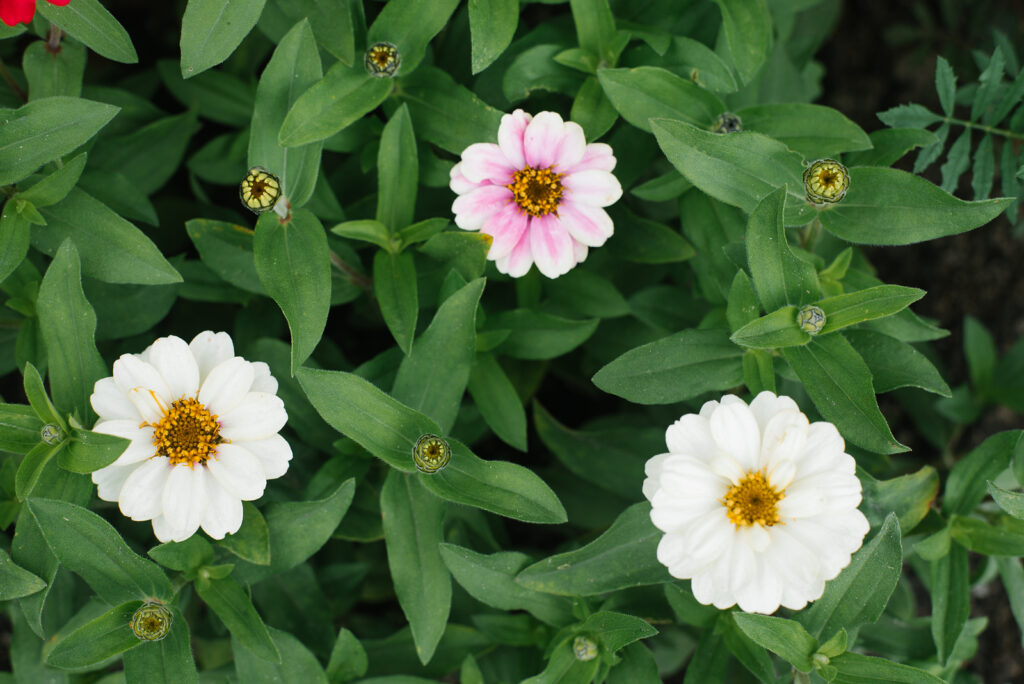
When to plant Zinnia
- Set zinnias in the garden in spring after all danger of frost has passed.
- Sow seeds indoors 6 to 8 weeks before the last frost; sow seeds at 60° to 65°F (15.6-18°C).
- Transplant zinnias to the garden with care a week or two after the last frost in spring.
- For season-long blooms, sow seeds every 3 to 4 weeks until mid-summer.
Planting and spacing Zinnia
- Space zinnias 6 to 15 inches (15-38cm) apart depending on the variety.
- Sow seed 1/4 inch deep in sterile seed starting mix indoors; sow seed outdoors in evenly prepared garden soil.
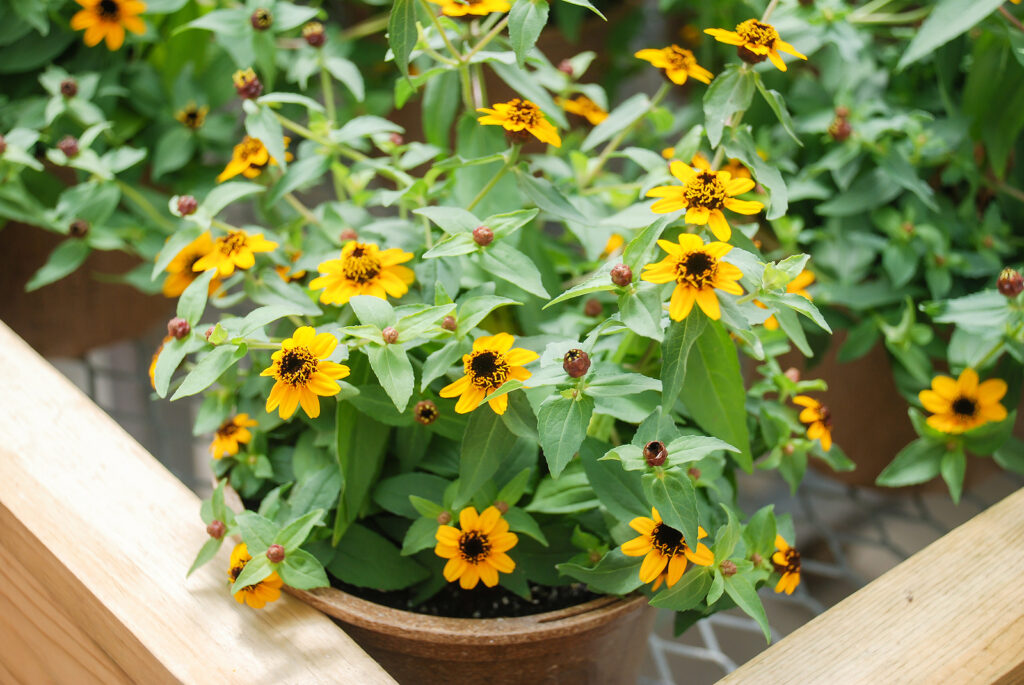
How to water and feed Zinnia
- Zinnias need moderate moisture; keep the soil evenly moist.
- Fertilize zinnias occasionally every 4 to 6 weeks with an all-purpose fertilizer.
- Zinnias are prone to mildew; avoid wetting leaves and select mildew-resistant varieties.
Zinnia care
- Mulch around zinnias to conserve moisture and stem the spread of disease in splashing water.
- Pinch the ends of growing tips to encourage fuller plants. Do not pinch plants if you are growing zinnias for cut flowers and want long-stemmed flowers.
- Stake tall plants as needed.
Zinnia pests and diseases
- Aphids, capsid bugs, chrysanthemum eelworms, and earwigs may attack zinnias.
- Seedlings are susceptible to damping off and in wet conditions fungal root rots.
- Grey mold may infect the flowers in wet seasons.
- Powdery mildew can settle on leaves in cool or wet weather.
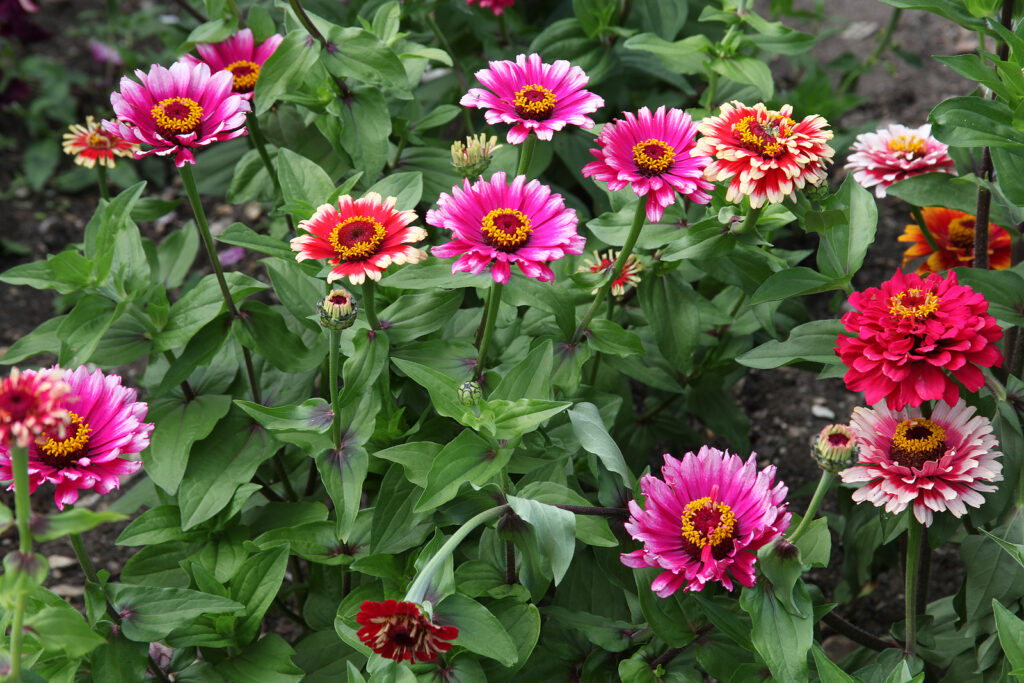
Zinnia propagation
- Zinnia seeds germinate in 7 to 10 days at 70° to 80°F (21°-27°C).
- Sow seeds indoors or in a greenhouse in spring 6 weeks before transplanting them to the garden.
- Sow seed outdoors after the last frost in spring; sow seed in final planting position and thin out the seedling to the required spacing.
- Zinnias do not like roots being disturbed at transplant time.
Good Products for Seed Starting Success at Amazon:
- Jump Start Germination Station w/Heat Mat Tray, 72-Cell Pack, Dome
- Espoma Seed Starting Mix
- 200 Count- Jiffy 7 Peat Soil Seed Starting Plugs
- Seed Starter Kit with Humidity Dome (120 Cells Total Tray)
- AgrobriteT5 Fluorescent, 2-Foot, Grow Light System
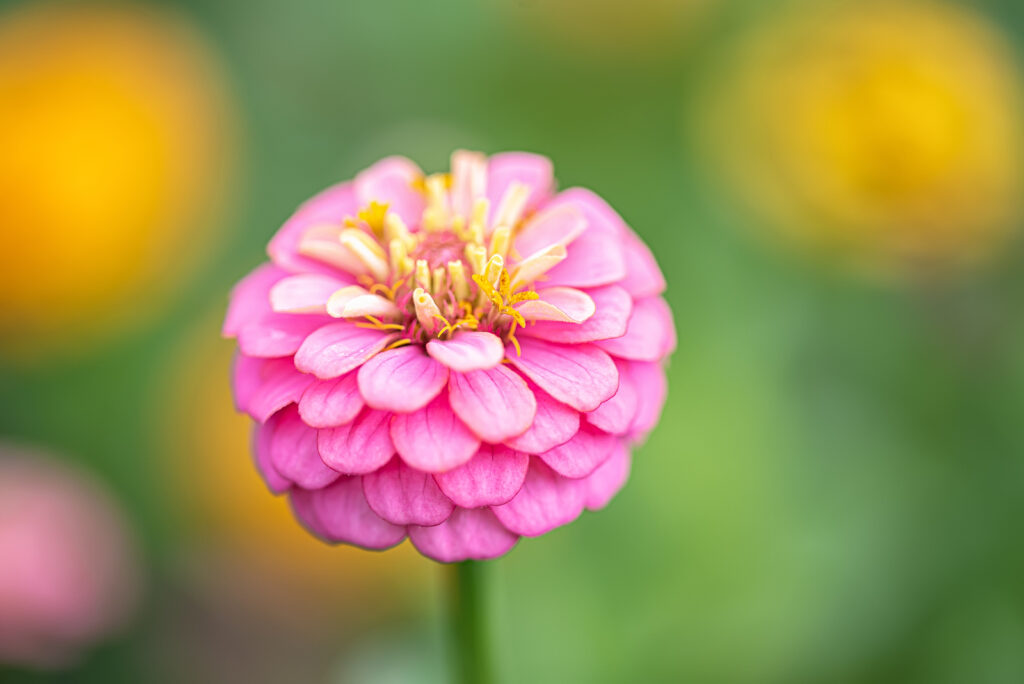
Zinnia varieties to grow
- Zinnia angustifolia: Annual, compact plants to 16 inches (40cm) tall; inch-wide flower hears; bloom in 6 weeks from seed; perennial in mild winter; can be used in hanging baskets.
- Z. elegans: Annual grows 12 to 36 inches (30-91cm) tall; flower heads from 1 to 7 inches (2.5-17cm) across; forms include full doubles, cactus flowered, and crested; colors in white, pink, salmon, rose, red, yellow, orange, lavender, purple, and green; strains include Border Beauty, Burpeeana California Giants, Ruffles, State Fair, Zenith.
- Z. grandiflora: Perennial in warm-winter regions, grows to 10 inches tall, flowerheads 1.5 inches across.
- Z. haageana: Annual, compact plants to 18 inches (45cm) tall, flowers in red, yellow, and orange, long-blooming.















